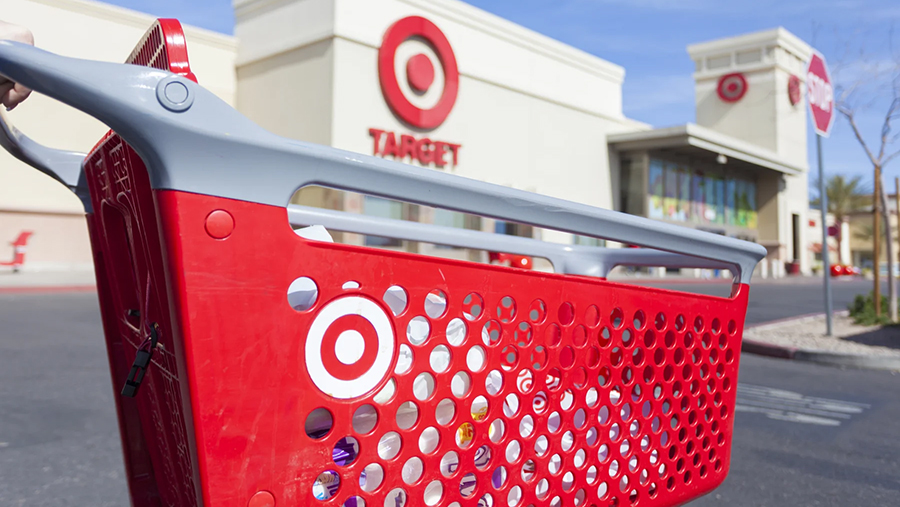Target reported third-quarter earnings were well above guidance but same-store sales fell for the second consecutive quarter and are expected to decline in the fourth quarter amid continued declines in discretionary categories.
Brian Cornell, chair and chief executive of Target Corporation, said “In the third quarter, our team continued to successfully navigate our business through a very challenging external environment. While third-quarter sales were consistent with our expectations, earnings per share came in far ahead of our forecast. This profit performance benefited from our team’s commitment to efficiency and disciplined inventory management, and I’d like to thank them for their tireless efforts. Looking ahead, we’re continuing to make investments throughout our business—in our assortment, our team and the services we offer —to provide the newness, affordability and convenience our guests want during the holiday season and beyond.”
Operating Results
The company reported third-quarter GAAP and Adjusted earnings per share1 (EPS) of $2.10, up 36.3 percent from $1.54 in 2022. Company guidance was in the range of $1.20 to $1.60 and analysts’ consensus estimate of $1.48.
Comparable sales declined 4.9 percent in the third quarter, reflecting a comparable store sales decline of 4.6 percent and a comparable digital sales decline of 6.0 percent. Target’s guidance had called for a mid-single-digit decline.
Total revenue of $25.4 billion was 4.2 percent lower than last year, reflecting a total sales decline of 4.3 percent and a 0.6 percent decrease in other revenue. Analysts’ consensus estimate had been $25.24 billion.
Declines in discretionary categories were partially offset by continued growth in frequency categories, most notably in Beauty. Same-day services grew more than 8 percent, led by more than 12 percent growth in Drive-Up.
Third quarter operating income of $1.3 billion was 28.9 percent higher than last year, driven by a higher gross margin rate. The company’s third-quarter operating income margin rate of 5.2 percent was 1.3 percentage points higher than last year, driven by a higher gross margin rate.
Third quarter gross margin rate was 27.4 percent, compared with 24.7 percent in 2022, reflecting lower markdowns and other inventory-related costs, lower freight costs, lower supply chain and digital fulfillment costs, and a favorable category mix. These benefits were partially offset by higher inventory shrink. Third quarter SG&A expense rate was 20.9 percent in 2023, compared with 19.7 percent in 2022, reflecting the de-leveraging impact of lower sales combined with higher costs, including continued investments in pay and benefits and inflationary pressures throughout our business, partially offset by disciplined cost management.
Inventory at the end of Q3 was 14 percent lower than last year, reflecting a 19 percent reduction in discretionary category inventory.
To deliver newness and value for guests this holiday season, Target said it plans to offer more than 10,000 new items for the holidays, with thousands of “must-have gifts” under $25, and thousands of exclusive-to-Target items across many categories.
Interest Expenses and Taxes
The company’s third quarter 2023 net interest expense was $107 million, compared with $125 million last year, reflecting an increase in interest income, partially offset by higher debt levels and the impact of higher floating interest rates on interest rate swaps. Third quarter 2023 effective income tax rate was 21.3 percent, in line with the prior year’s rate of 21.6 percent.
Capital Deployment and Return on Invested Capital
The company paid dividends of $507 million in the third quarter, compared with $497 million last year, reflecting a 1.9 percent increase in the dividend per share.
The company did not repurchase any stock in the third quarter. As of the end of the quarter, the company had approximately $9.7 billion of remaining capacity under the repurchase program approved by Target’s Board of Directors in August 2021.
For the trailing twelve months through third quarter 2023, after-tax return on invested capital (ROIC) was 13.9 percent, compared with 14.6 percent for the trailing twelve months through third quarter 2022. The decrease in ROIC reflects faster growth in average invested capital compared with after-tax returns. The tables in this release provide additional information about the company’s ROIC calculation.
Guidance
For the fourth quarter, the company expects comparable sales in a wide range around a mid-single-digit decline, and GAAP and Adjusted EPS of $1.90 to $2.60. Adjusted EPS was $1.89 for the 2022 fourth quarter compared with $3.19 in the 2021 fourth quarter.
Photo courtesy Target










